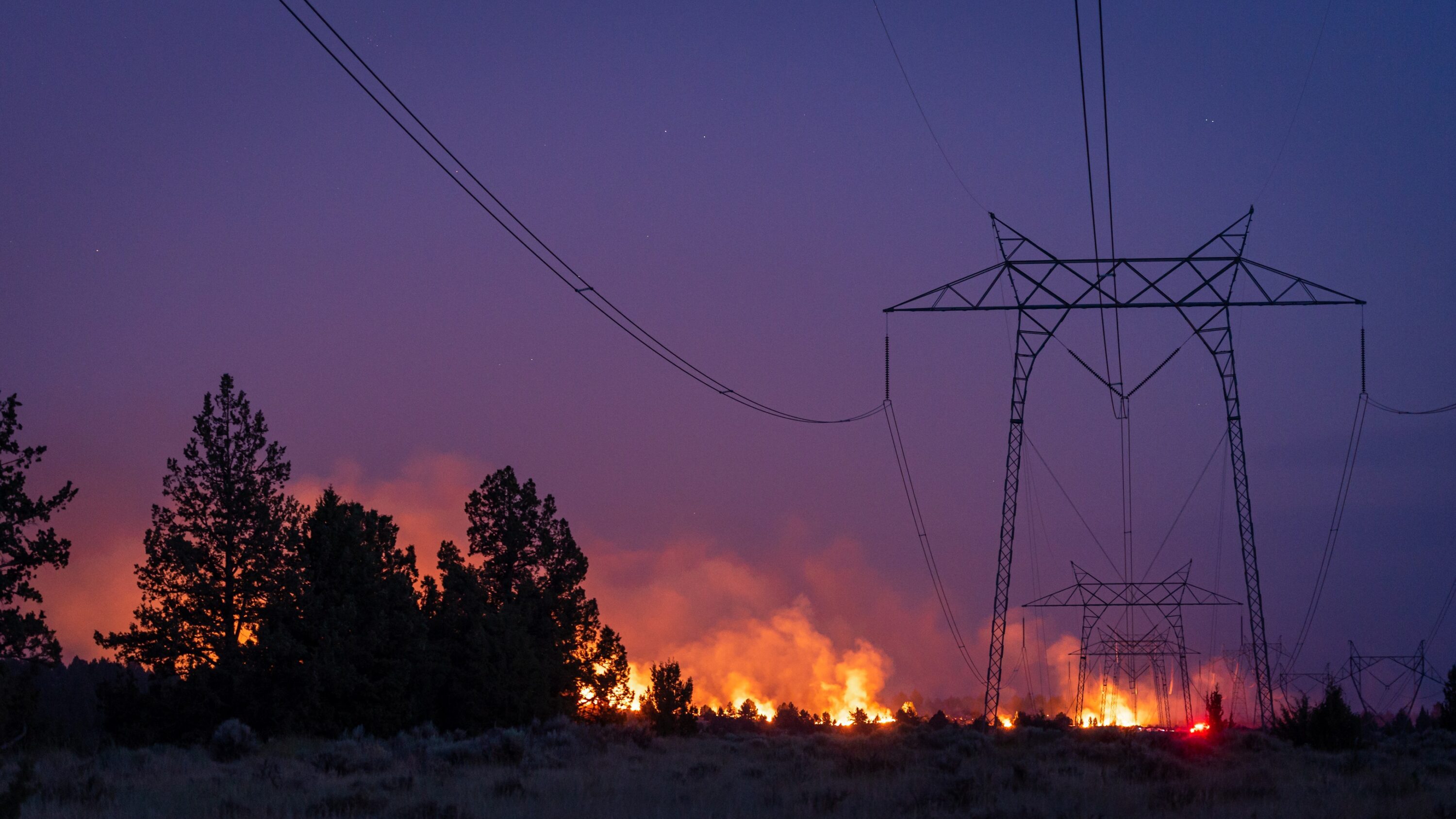Reducing Wildfire Risk in the Power Sector
April 1, 2024

Electricity infrastructure has ignited some of the most destructive wildfires in recent years. Contact between power lines and vegetation has caused costly and deadly fires in California, Australia, Hawaii, Oregon and Texas. Utilities are deploying a variety of strategies to reduce the likelihood that their infrastructure ignites wildfires in the future. New Energy Institute research, which investigates these investments in detail, could help guide the future of utility wildfire mitigation.
Cody Warner (UC Berkeley Energy and Resources Group, PhD student), Energy Institute Faculty Affiliate Duncan Callaway (Energy and Resources Group) and Energy Institute Faculty Director Meredith Fowlie (Agricultural and Resource Economics) have released a working paper titled “Risk-Cost Tradeoffs in Power Sector Wildfire Prevention” that provides careful analysis and modeling of utility-ignitions and ways to prevent them.
The researchers used detailed data from the largest utility in the country, Pacific Gas and Electric, and developed a machine learning model to predict daily ignitions for its distribution circuits located in high-risk areas. To train the model, they used circuit data from 2015 to 2019, before the utility began deploying new wildfire mitigation methods at scale. Then they used the model to estimate daily circuit-level baseline ignition risk post-2019. This allows them to match circuits that received wildfire risk mitigation with circuits that had the same level of baseline ignition risk, but did not receive wildfire mitigation. Comparisons across these groups allows the researchers to estimate how effective different mitigation strategies have been at reducing ignition risk. They estimated there would have been four times more ignitions in 2022 if the wildfire mitigation had not been applied.
The researchers found that the use of fast-trip settings, an operational change that increases the sensitivity of existing protection equipment during high-fire risk times, has been quite effective. Averaging across segments where fast-trip settings were activated, the researchers estimate a 72 percent reduction in ignition risk on average. They estimate that enhanced vegetation management decreased ignition risk by 57 percent, on average.
Percentage Reduction in Ignition Risk
An approach that is currently receiving significant attention in California is to bury overhead lines. This approach eliminates ignition risk, but this comes at a relatively high cost.
To begin comparing the relative cost effectiveness of alternative strategies, the researchers use a model of wildfire spread to map estimates of avoided ignitions to estimates of avoided damages. The graphic below compares cost effectiveness in terms of avoided structures burned. The researchers estimate that vegetation management and undergrounding investments cost three to five times more than fast-trip settings per structure saved. Uncertainty around these estimates – some of which is generated by uncertainty around key parameters such as how to value lost load- are reflected by the error bars below.
Cost per Avoided Structure Burned

This research has already received significant attention from utilities and regulators who are eager for tools and analysis that can help guide investments in wildfire risk reduction. This foundational work will help them more systematically balance risk reduction and cost, an essential tradeoff as the risk of wildfire disasters increases and utility bills become less affordable.
